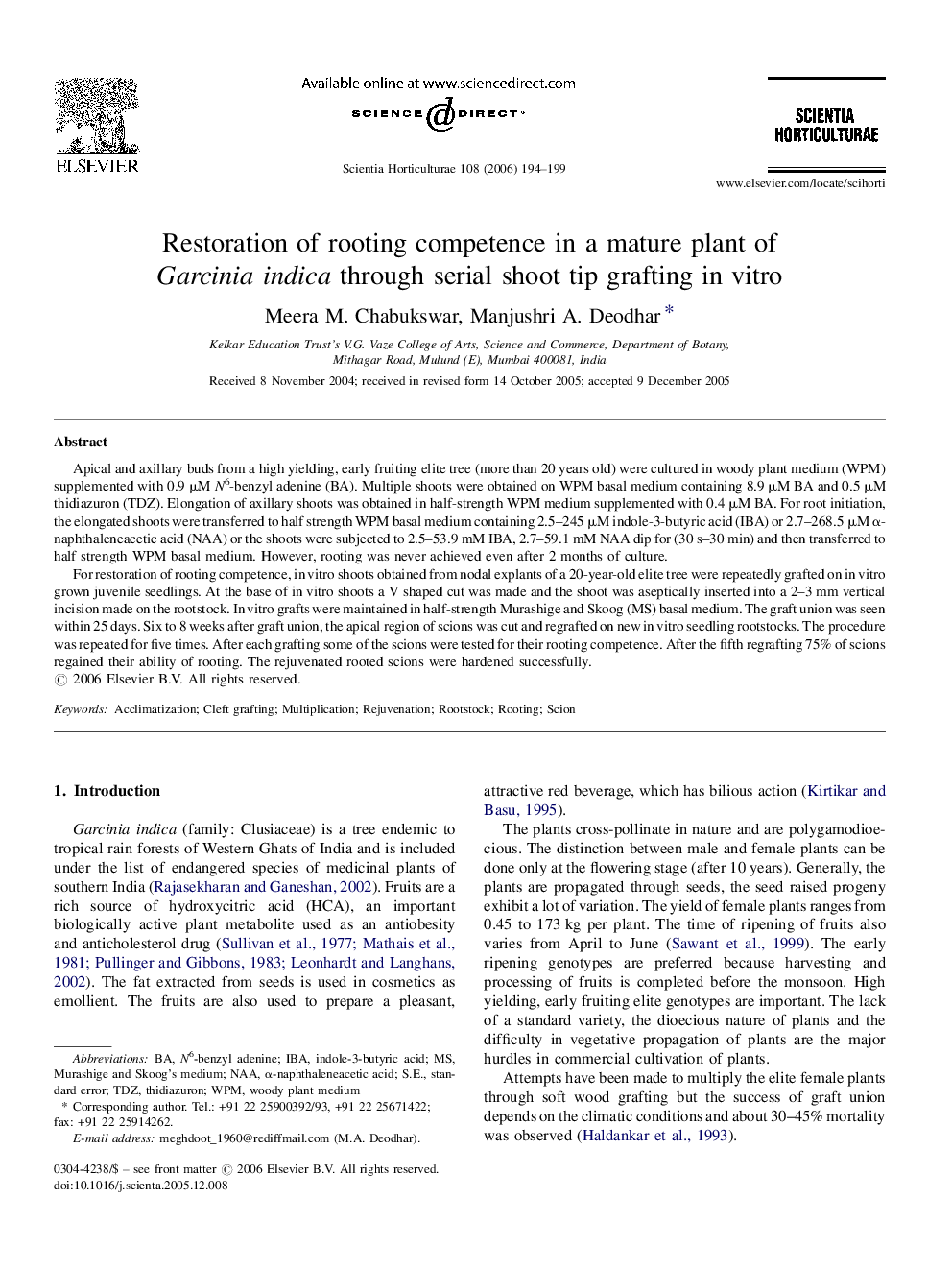| Article ID | Journal | Published Year | Pages | File Type |
|---|---|---|---|---|
| 4570043 | Scientia Horticulturae | 2006 | 6 Pages |
Apical and axillary buds from a high yielding, early fruiting elite tree (more than 20 years old) were cultured in woody plant medium (WPM) supplemented with 0.9 μM N6-benzyl adenine (BA). Multiple shoots were obtained on WPM basal medium containing 8.9 μM BA and 0.5 μM thidiazuron (TDZ). Elongation of axillary shoots was obtained in half-strength WPM medium supplemented with 0.4 μM BA. For root initiation, the elongated shoots were transferred to half strength WPM basal medium containing 2.5–245 μM indole-3-butyric acid (IBA) or 2.7–268.5 μM α-naphthaleneacetic acid (NAA) or the shoots were subjected to 2.5–53.9 mM IBA, 2.7–59.1 mM NAA dip for (30 s–30 min) and then transferred to half strength WPM basal medium. However, rooting was never achieved even after 2 months of culture.For restoration of rooting competence, in vitro shoots obtained from nodal explants of a 20-year-old elite tree were repeatedly grafted on in vitro grown juvenile seedlings. At the base of in vitro shoots a V shaped cut was made and the shoot was aseptically inserted into a 2–3 mm vertical incision made on the rootstock. In vitro grafts were maintained in half-strength Murashige and Skoog (MS) basal medium. The graft union was seen within 25 days. Six to 8 weeks after graft union, the apical region of scions was cut and regrafted on new in vitro seedling rootstocks. The procedure was repeated for five times. After each grafting some of the scions were tested for their rooting competence. After the fifth regrafting 75% of scions regained their ability of rooting. The rejuvenated rooted scions were hardened successfully.
